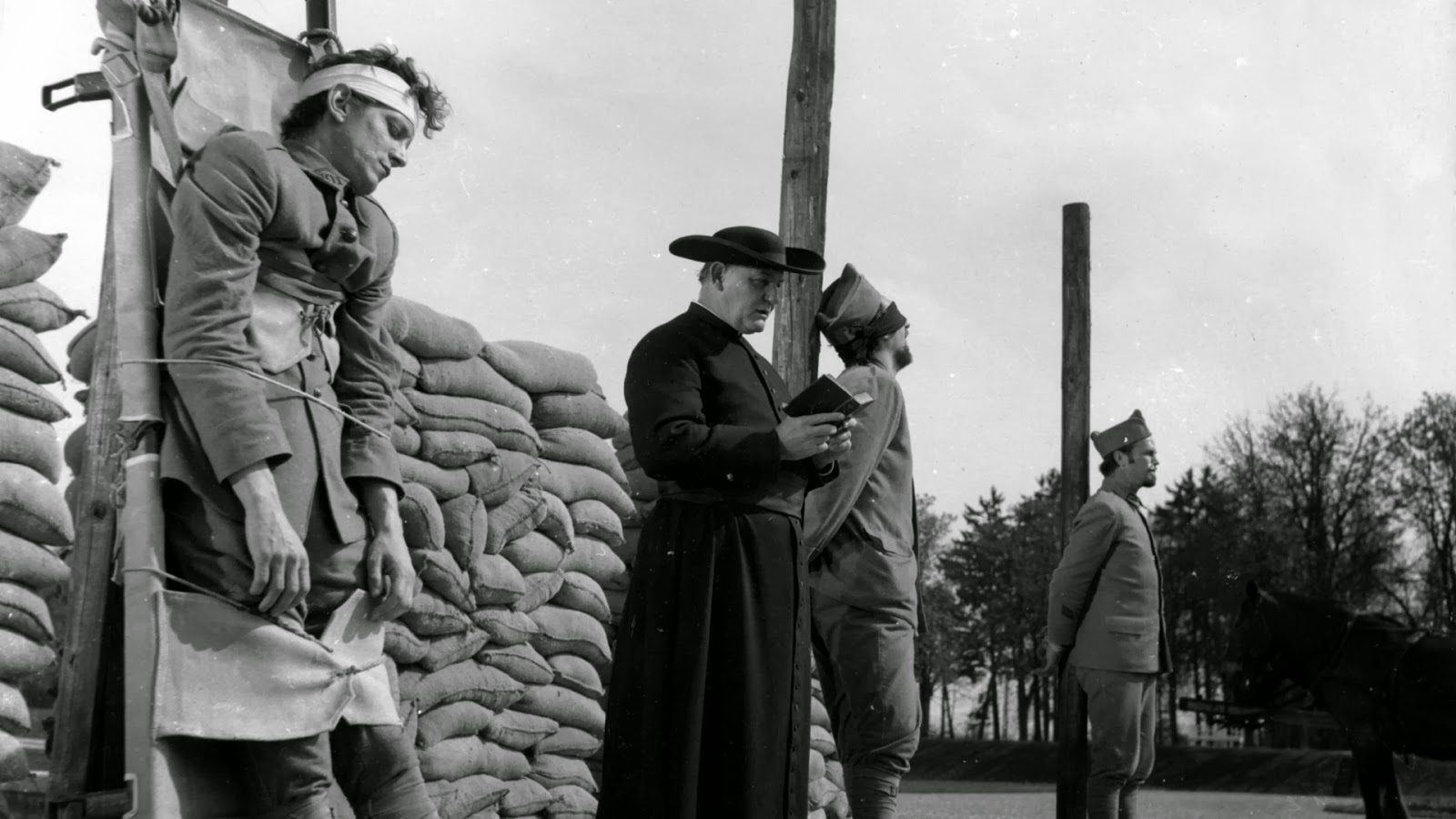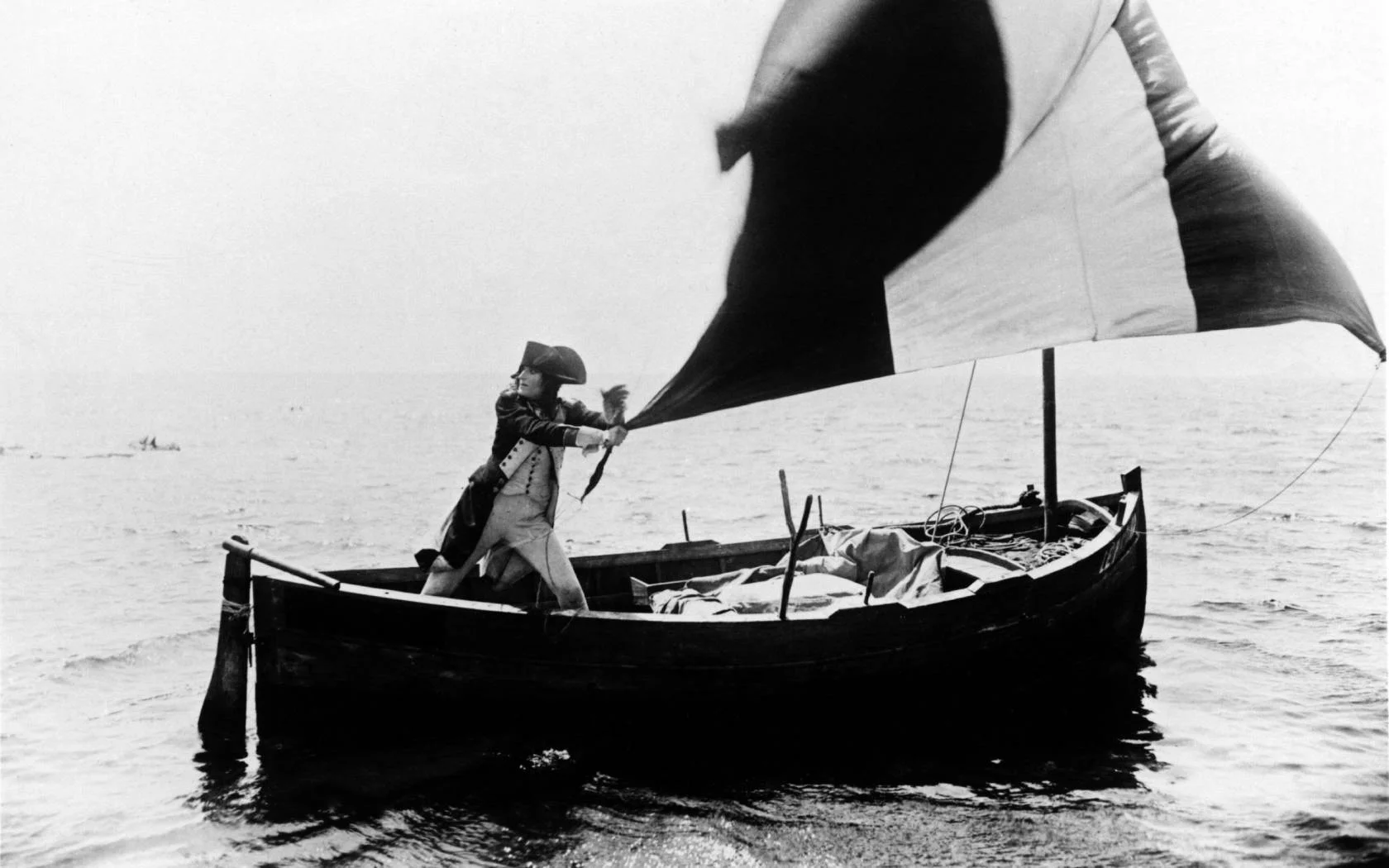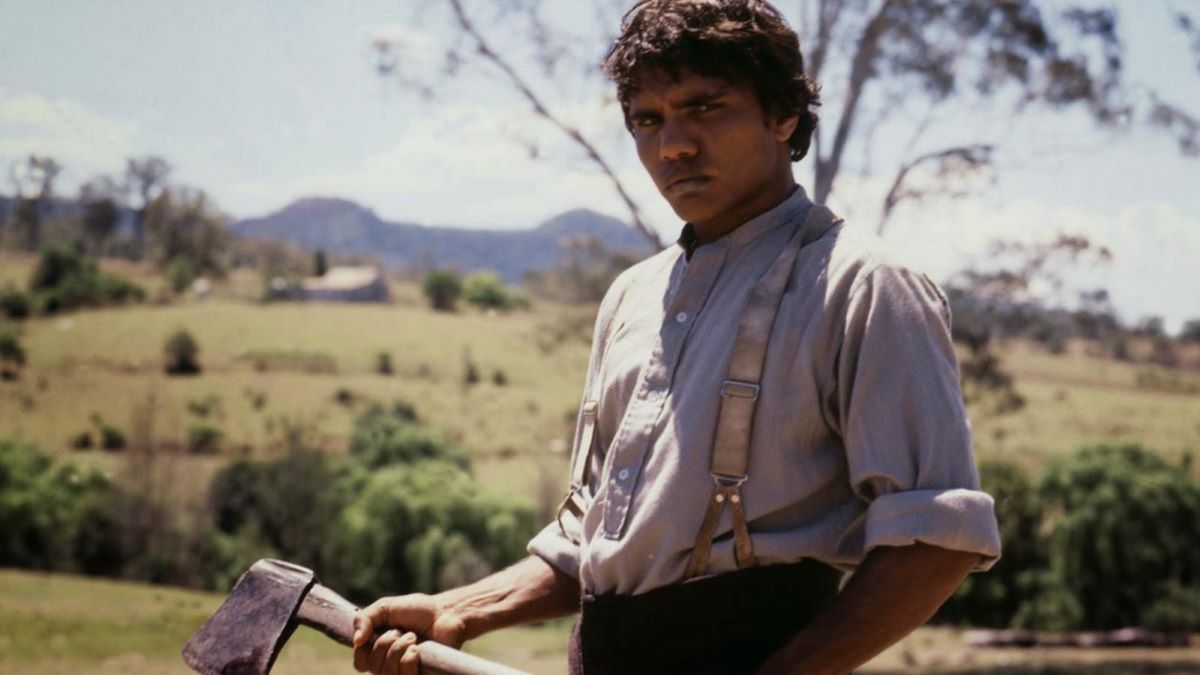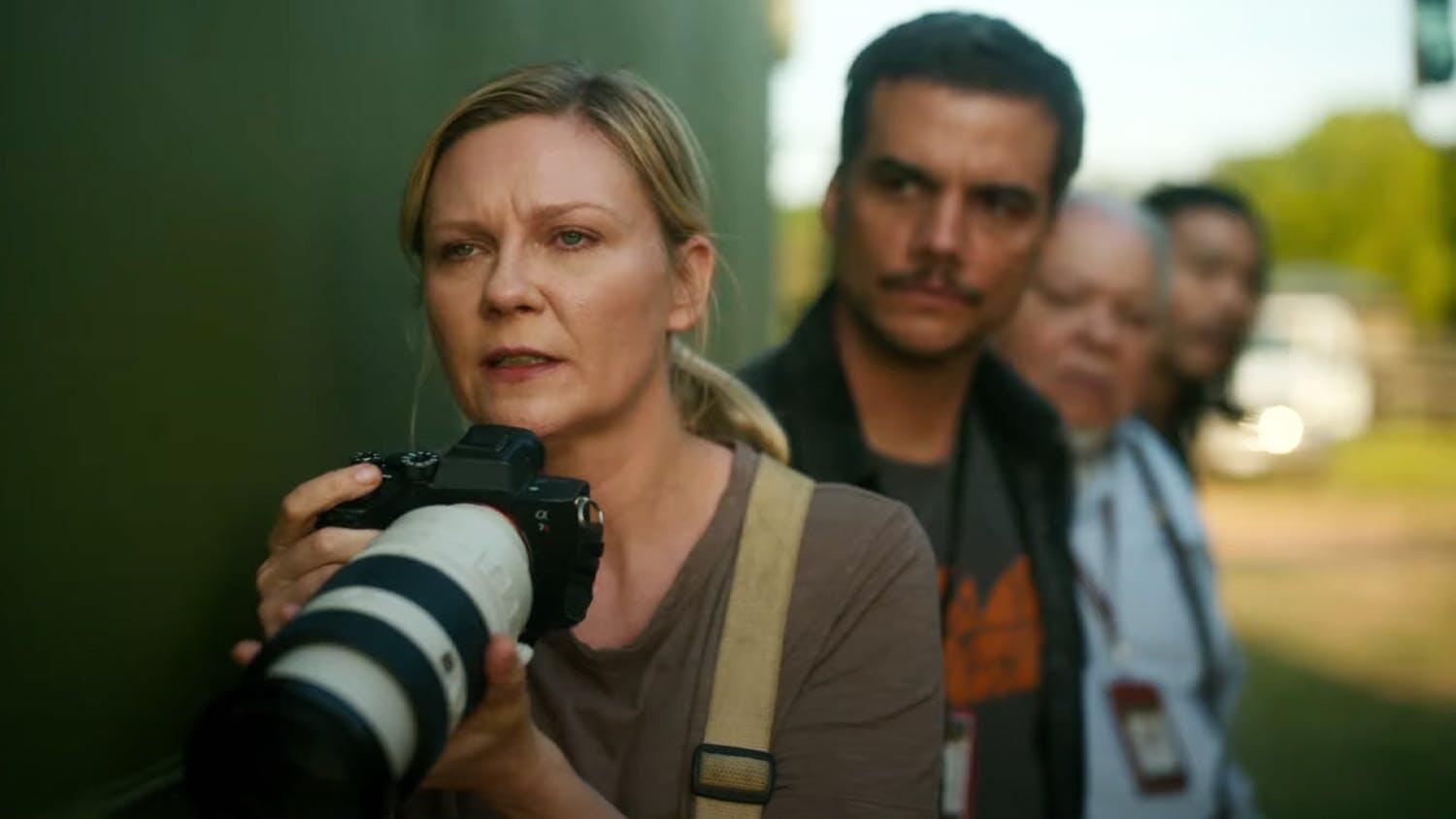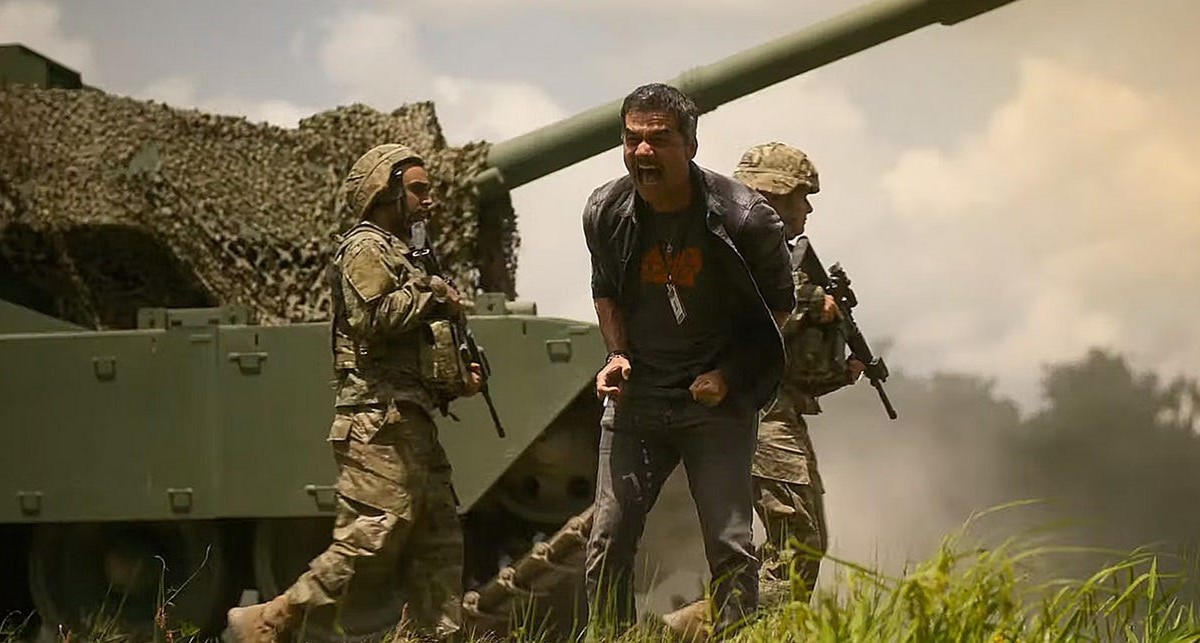by Gavin Lambert
France, 1916, a few miles behind the front: upstairs, in the chateau commandeered by the French army as military head-quarters, the orchestra plays a waltz for an officers’ ball; and in the grandiose panelled library General Broulard has deserted his guests to sip brandy and talk with young Colonel Dax. “Troops are like children. They need discipline . . .” The General believes in setting examples. Dax asks what kind of example and the old man gives an elegant, furtive shrug. “Shooting a man”, he explains, “now and then”.
In fact, three French soldiers are due to be shot as “examples” in a few hours’ time. On the previous day the Division Commander, General Mireau (at Broulard’s hint that promotion will attend a success) ordered Dax to lead an attack on an obviously impregnatale German position.
When it failed, the enraged Mireau first ordered the artillery commander to fire on his own men, which the commander refused to do, then after the battle insisted that three men should be chosen by lot from the division and be court-martial-led for cowardice. Broulard, also feeling the honour of G.H.Q. at stake, agreed. The trial took place and in spite of Dax’s plea (in civilian life he was a criminal lawyer) the men were sentenced to death. As a last resort, Dax now brings to Broulard his knowledge that Mireau wanted to fire on his own men, but the old General still doesn’t feel that this alters the case. He doesn’t share Mireau’s angry thirst for revenge, but he believes in discipline. Examples must be set.
The execution proceeds. Afterwards, at breakfast in the chateau, Broulard calmly turns on Mireau and tells him he will have to face an inquiry. Then he offers Mireau’s position to Dax, explaining with a smile of complicity that he realises this is what Dax has been after all the time. When Dax explodes with rage and says all he has been after is human decency, the terrible old man is genuinely incapable of understanding him.
Paths of Glory, directed by Stanley Kubrick (Bryna Productions for United Artists) has no lack, as you can see, of brutal ironies. It is based, incidentally, on a novel by Humphrey Cobb in turn drawn from an actual incident that occurred in the French army during World War One. Its epigraph might be von Clausewitz’s remark: war is merely an extension of the policies of peace. There is much in the film that powerfully illustrates the physical horrors of war, but even more impressive and frightening is the study of its social structure. The world seems cruelly divided into the leaders and the led. The officers conduct their foxy intrigues in the elegant rooms of a great chateau, and the setting somehow emphasizes their indifference to human life. The men go to the trenches and into battle as in peace-time they went to offices or factories. The sequence of the attack itself, done mainly in a series of vivid, inexorable, lateral tracking shots, is a fearful reminder that war, simply, kills a lot of people; and the film finds an eloquent visual contrast between the grim carnage of the battlefield and the spacious luxury of headquarters.
We are in fact a long way from the emotional pacificism of All Quiet on the Western Front, which was made twelve years after World War One. Paths of Glory, made twelve years after World War Two, never openly attacks war as an abstraction, neither does it examine causes. I suspect it will be the more lasting film, certainly it is difficult to imagine a film about war that could have a more stunning impact today. Seeing All Quiet again recently, I was as impressed as ever by the tragic realism of its battle sequences and the boldness of its protest, but occasionally appalled by the inadequacy of its arguments. (At one point two privates suggest that everything could be solved if the two opposing generals rolled up their sleeves and fought it out alone on the battlefield.) Paths of Glory, by showing the gulf between leaders and led fatally widened by the fact of war, shows war itself as an extended struggle for power, internal and external. It is the practical as opposed to the sentimental argument, and seems easily the more persuasive today, when one can’t avoid feeling that if another war breaks out it will be for reasons completely remote from the lives of most people: another extension of the policies of peace, in fact, which when we read about them in the newspapers seem remote enough already. The visual contrast of, say, a “Summit” conference and a hydrogen bomb exploding on a city, is only taking Paths of Glory‘s contrast of the chateau and the trenches a stage further.
This is not only a film of unusual substance but a powerfully realised and gripping work of art. In The Killing Stanley Kubrick’s talent was operating within the limits of familiar melodrama; Paths of Glory is meaningful as well as brilliant. The material is very well organised—the first fifteen minutes are a tour de force of complex exposition made clear and dramatic by resourceful handling—and the characterisations bitingly sharp. The two most memorable portraits are of the Generals Broulard and Mireau. Adolphe Menjou as the first, cynical, sly and incalculably corrupt, George Macready as the cold, vengeful, ambitious militarist, are beyond praise. Richard Anderson is also excellent as Mireau’s lackey, Major Saint-Auban. Evil in fact, turns out not for the first time to be more dramatic than good. Kirk Douglas is sober and honest in the part of Dax, but we know less about him than the others, and he remains more a spokesman for the audience’s feelings than a fully explored character. At the end he is left on the brink of disgust for the human race—not only officers but men, who seem to forget their comrades’ death all too quickly. A final incident convinces him that men are more than pigs, and when news comes that his division will be moved into action again next day, he is able to face it with equilibrium. This scene is effective in itself but loses some force because we see it through the eyes of a character never brought very dose.
There is much violence and unsparing physical detail in the film, yet the final effect is somehow austere, because the horror has a moral force. For the dialogue sequences Kubrick uses a fluid probing technique recalling Max Ophüls (whom he especially admires) with more close-ups. At times he dispenses with the conventional syntax of fade or dissolve, which has the general effect of stretching the narrative line very tight and can also make a particular dramatic comment—a briefly held shot of the corpses of the three executed men, slumped against the wooden posts to which they have been tied, is followed by a cut to the two generals at breakfast in the dining-room, the table glittering with fine silver. The execution sequence itself—the soldiers drawn up in the chateau’s formal garden, the priest embarrassedly countering the hysteria of one of the men with correct religious phrases, the three upright wooden posts, the coffins waiting in an open cart, the two generals erect and bemedalled nearby as if dressed up for a review, and a sudden twittering of birds as rifles are raised— is masterly.
It may be that some of the films more relentless moments were a little too much for the censor; the version of Paths of Glory which has just opened in London is very slightly shorter than the American original.
Sight and Sound, Winter 1957-8 – pp. 144-5

